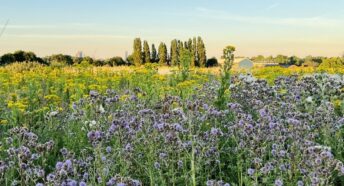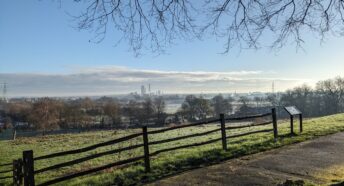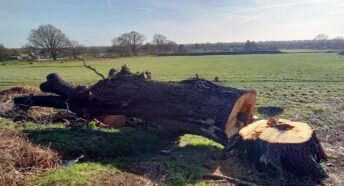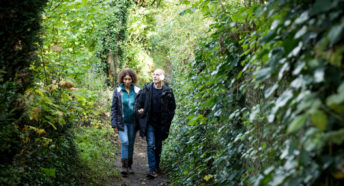13 proposals for the London Rewilding Taskforce
In June 2022 we submitted evidence to the GLA’s London Rewilding Taskforce Call for Evidence putting forward thoughts and 13 specific proposals as follows:
There are huge opportunities to create more and better wild habitat in London
- Wilder parks and estate green spaces, and more of them
- More restored and rewilded rivers
- More natural regeneration of woodland
- More hedgerows
- More ecological farming
- Reducing noise and light pollution within parks and the urban environment, including through reducing traffic, to improve habitat for wildlife and create a more natural and wild experience
Every public (and private) open space has opportunities for improving biodiversity, obviously depending on the size and character of the site and the pattern of usage by local people. Biodiversity needs to be carefully balanced and integrated by ensuring that the range of other needs (sport, play, walking routes etc) are also protected and improved and decisions about improvements to public green spaces need to take into account the range of needs of local communities.
Specific proposals:
- Support CPRE London’s emerging project which aims to identify sites which can be improved, protected or better recorded (nature records), to ensure they make the maximum possible contribution to re-wilding London.
- Expand and improve funding streams for local initiatives which seek to rewild or improve green sites for nature. Very many Park & Green Space Friends Groups choose to take on fundraising and project management of rewilding / biodiversity / habitat creation projects, as well as landscape maintenance volunteering sessions. Many would be interested in any funding streams geared towards community-led projects for public green spaces. It is vital that applications should be easy to fill in, that there are no unnecessary obstacles put in the way of a successful application, and that site managers/owners are supportive of genuine community involvement.
- Identify five significant sites where dark skies and / or noise could be reduced or eliminated and work with the borough and local park friends groups to make it happen.
- Promote the use of site specific Conservation Action Plans with active community involvement and genuine partnership-working, as well as an experienced and passionate agent such as The Conservation Volunteers to coordinate and progress the process.
More interaction with wild spaces
Create more and better advertised opportunities for people to connect with nature including open water swimming and green walking / wheeling routes.
Specific proposals:
- Support a Great Green Routes of London project which aims to promote opportunities to walk, cycle or wheel in nature.
- Create new routes via the Ramblers Coalition’s new routes work; and via Sustrans to improve and expand the way-marked National Cycle Network along green routes
- Support the GoParksLondon project to promote wild spaces and nature reserves to more people, and particularly to ensure everyone gains equal benefit
Grasp the opportunity presented by CPRE London’s Ten New Parks sites
Our Ten New Parks campaign has highlighted a number of very large sites in London which could become important sites for wildlife and/or recreation. At least two of these (Warren Farm and Beddington Farmlands) have potential to provide nationally important habitats – but Warren Farm continues to have no clear identity and no Nature Reserve status – and Beddington Farmlands is in drastic decline as a water habitat because the council has failed to enforce the planning conditions for the nearby incinerator which required the company to restore the site and provide public access. There is also the Welsh Harp / Reservoir which is in decline and needs major investment; very large sites along the Rivers Roding and Quaggy which are fenced off and derelict; the old Thames Water Depot on the Lea Bridge Road in Waltham Forest which local campaigners are looking to rewild and create a wild swimming pond; as well as the proposed ‘Dandy Fifth’ nature reserve woodland and the ‘Railway Children’ park; and the proposed Banbury Reservoir Park on the Enfield / Waltham Forest border. These could all make very strong contributions to rewilding London.
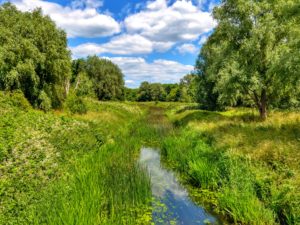
Specific proposal:
- Each of the local Ten New Parks campaigns have specific issues they need help on. They need the GLA to respond positively to these and work with them to overcome hurdles.
Transform streets into parks and parking spaces into parklets
There is a huge opportunity to transform ‘grey space’ – space given to roads and parking – into green space and this can help to create corridors between green spaces too.
Specific proposals:
- Support boroughs to remove parking spaces for parklets (with planting) and close roads to traffic to create whole new parks. This can be done via transport strategy as well as London Plan policy.
- End front-garden parking using London Plan policy so that boroughs put in place policies which such that no further permissions will be issued for front garden parking; and historic permissions will be removed by making residential planning permission conditional upon the removal of any front garden parking permission and restoration of a permeable surface.
Phase out use of herbicides, insecticides and fungicides
Any strategy for rewilding in London must include measures to phase out the use of herbicides, insecticides and fungicides and replace them with environmentally friendly, sustainable alternatives that work in harmony with nature and do not threaten biodiversity or the wider environment.
Specific proposal:
- Halt use of these on any TfL or GLA property or land or wherever
- Promote policies to halt use of these across all London land managers particularly boroughs
Promote and share examples of action
There will be very many great examples where Friends Groups have helped increase nature conservation, biodiversity and re-wilding at their site. For example: Lordship Recreation Ground, Tottenham’s 26ha district park, has been transformed in terms of biodiversity over the last 20 years, led by the Friends in partnership with Haringey Council’s Parks Service – with a daylighted river channel, large areas of grassland/meadow, and areas of scrub and woodland.
Specific proposal
- The London Friends of Green Spaces Network can carry out a survey to identify sites so these experiences can be shared. This could also ascertain the extent and detail of such efforts, including potential case studies.




